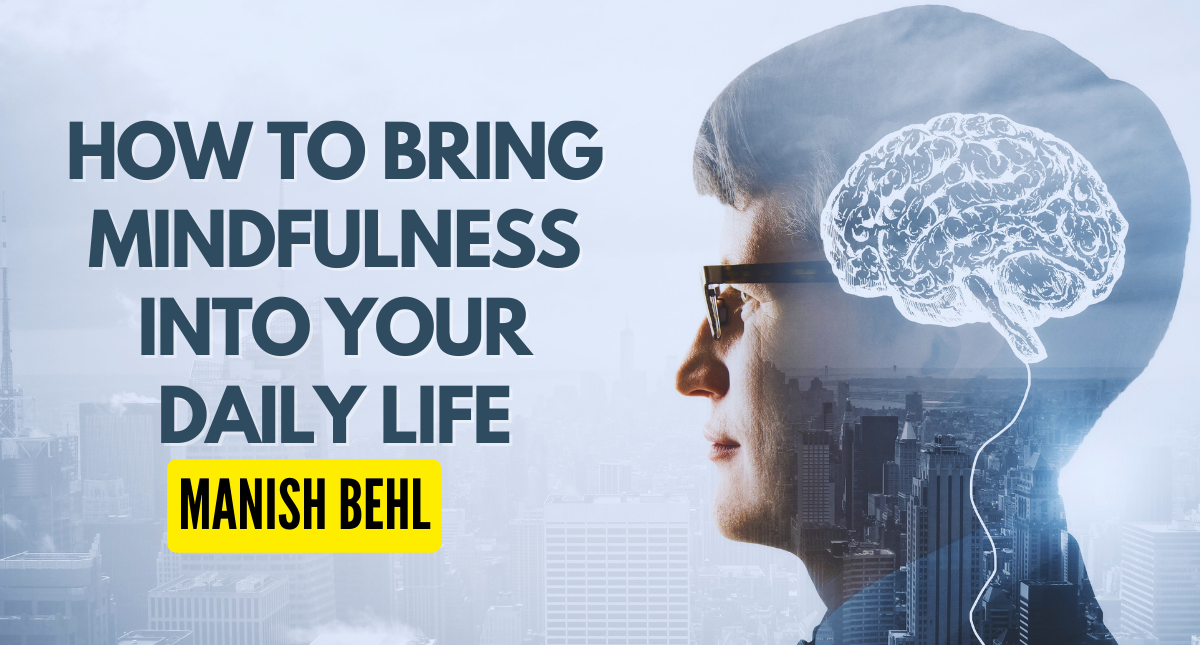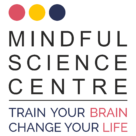
Bring Mindfulness Into Your Daily Life
Article Written by Manish Behl – India’s Leading Mindfulness Expert
5 Ways that will change your life
Each day brings plenty of opportunities for mindfulness — from washing the dishes to waiting in traffic. Here are 6 ways to stay mindful through the day.
Mindfulness involves being aware of your surroundings as well as what you are feeling inside.
Mindfulness can have mental health benefits, with researchers in a 2021 study Trusted Source reporting that people who practiced mindful meditation during lockdown self-reported less pandemic-related stress than those who didn’t.
Practicing mindfulness as part of your everyday life can have benefits both for the mind and the body. Incorporating mindfulness into your everyday life doesn’t need to be difficult, and can be as simple as daily mindful breathing exercises.
What is mindfulness?
The American Psychological Association defines mindfulness as a sense of awareness of one’s surroundings, as well as one’s internal state of being.
A mindfulness practice can help people acknowledge their thoughts and feelings in a healthy way and enable them to avoid habits or behaviors that might be destructive or unhelpful.
Mindfulness can be used as a tool in cognitive behavioral therapy (CBT), meditation, and stress reduction exercises.
Modern mindfulness practices commonly include a focus on meditation, relaxation, attention, and on observing passing thoughts.
When you start to practice mindfulness, you may notice that each moment brings an opportunity for mindful presence.
1. When you wake up
When you wake up in the morning, you can spend a few minutes checking in with yourself. How do you feel? What emotions are there? Do you feel any physical aches or pains? If so, you might take a moment to stretch in a way that feels good.
You could also consider adding a walk to your morning routine, taking time to notice the trees and houses that you see along the way. A morning journaling routine can also help you get acquainted with what’s going on in your head.
2. Regular mindful breathing
To help you stay present throughout the day, it might help to turn toward your breath.
Mindful breathing simply involves focusing your thoughts on the breath coming in and leaving your body. You might focus on the sensation of the air as it enters and leaves your nostrils, or the rising and falling of your breath in your belly or chest. Whatever feels right for you.
It’s not always easy to focus on the breath, as our minds love to flit between different thoughts. If you notice your mind wandering, gently bring it back to the breath.
If you’d like to make mindful breathing a daily routine, it can help to set a reminder on your phone a few times a day, or make a plan to spend some time focusing on your breath every day before making dinner.
You could also try breathing exercises, such as deep breathing and the 4-7-8 method methods, that may help to slow your heart rate and calm your nervous system.
3. Focus on your senses
Another great way to bring mindfulness into your daily life is by making a point of focusing on sensations. You can do this at any time. All it takes is turning your attention toward what’s going on around you.
Everyday ways to practice mindfulness and focus on your senses include:
- when washing, focus on the sensation of warm, soapy bubbles on your skin and the smell of the soap
- when walking, pay attention to how your feet feel connecting with the pavement, and the sway of your arms and body as you move
- when eating or drinking, focus on the textures, flavors, and sensations that come with each mouthful
If you feel discomfort somewhere, it can help to mentally zoom in to where your body is holding that feeling. The shoulders, back, and jaw are common areas that carry tension. Does it feel tight? Sharp? Dull? Then, you might gradually try to let the tension go.
You can also try grounding exercises, like the 5-4-3-2-1 technique, which allow you to connect with the world around you. This involves letting your attention rest on:
- five things you see
- four things you hear
- three things you smell
- two things you touch
- one thing you taste
4. Mindfulness while you wait
Waiting in line at the supermarket, doctor’s office, or traffic light? This could be another opportunity to get mindful.
As you sit and wait, instead of defaulting to looking at your phone, you might take a few deep breaths and focus in on what’s around you. What interesting things can you see around you? What smells are in the air? What can you hear?
You might find that even one-minute mindfulness exercises can make a difference to your mind and mood through the day.
5. Schedule a daily meditation session
Taking time to sit still for a meditation session is the cornerstone of mindfulness for many folks.
You might devote 5 minutes, 20 minutes, or longer to sit quietly in a comfortable spot and tune in to a mindful state. Many people use guided meditations to help them get into the zone.
If you’re not sure where to start, various meditation apps can help you learn to meditate at home — apps like Mindful Science Centre Calm and Headspace.
Many apps help you keep track of your meditation, providing an incentive to keep up your practice each day.
There are many types of meditation, including:
- chanting meditation
- loving-kindness meditation
- zen meditation
A mindful game might also work for you. A 2019 study Trusted Source suggested that a mindfulness video game called Tenacity could increase the focused attention in adolescents.
How to make mindfulness a habit
Starting a new habit can be tough. Here are some ways to make your mindfulness practice a regular part of your life.
Develop mindfulness rituals and prompts
Your routines can be everyday things like walking or cooking. If you choose to do your routines mindfully, you can deliberately pay attention to when, how, why, and what you’re feeling while you’re doing them.
Having special prompts may help you recall your intentions. You may use a beautiful journal to capture your morning thoughts, or put a candle on your desk and light it before starting work as a call to work mindfully.
Establish your anchors
If you begin to feel uncomfortable or off-center, you might consider using a mindfulness anchor — something that keeps you grounded and brings you back to the present moment. This could mean:
- Turning your focus to your breath, and taking a few deep, mindful breaths.
- Checking in with your senses. What are you feeling, smelling, and hearing right now?
- Doing a body scan, where you pay attention to each part of your body in turn, from your head to your toes.
- Reminding yourself that whatever you’re feeling right now is temporary, and like all emotions you’ve had before, it will pass.
Find accountability partners
You may find it beneficial to:
- check in with a mindful friend once a day
- track your mindfulness habits in a journal
- receive daily reminders or affirmations from meditation apps
Find a supportive community
Manish Behl – mindfulness instructor and therapist, says to look for people who can:
- accept you as you are
- call you out as necessary
- show love and respect despite differences
Next steps
There are many accessible and inexpensive ways to learn mindfulness. You may consider Buddhist and other meditation classes, courses in schools and community centers, yoga classes, and mindfulness apps.
It can be challenging to start a new habit, but with everyday mindfulness, you can ease yourself into using mindfulness in small doses throughout the day.
Excerpts from article published in Psych Central
Mindfulness based Training for Workplace
Become A Certified Mindfulness Trainer
Join 12 Week Mindfulness Foundation Trainer Program – Read More
 Mindful Science Centre is mindfulness and emotional intelligence based training and learning centre providing leadership and performance solutions for corporates and organizations. Mindful Science Centre applies practices based on self-awareness and social emotional intelligence that cultivate leadership qualities such as attention, resilience, focus, empathy, compassion, communication and clarity.
Mindful Science Centre is mindfulness and emotional intelligence based training and learning centre providing leadership and performance solutions for corporates and organizations. Mindful Science Centre applies practices based on self-awareness and social emotional intelligence that cultivate leadership qualities such as attention, resilience, focus, empathy, compassion, communication and clarity.
Well-designed Mindfulness training programs and one-on-one coaching sessions support individuals and organisations to develop a positive outlook, decision-making, agility, creativity, concentration, sustainability, mental and physical well-being through mindfulness and Emotional Intelligence practices. Contact Mindful Science Centre to learn more about how to become Successful leader Web: www.mindfulsciencecentre.com. Mail: [email protected]
Do you want to become Mindfulness Trainer? Join this global certification program
To Get Information about Program Fill in Below details

